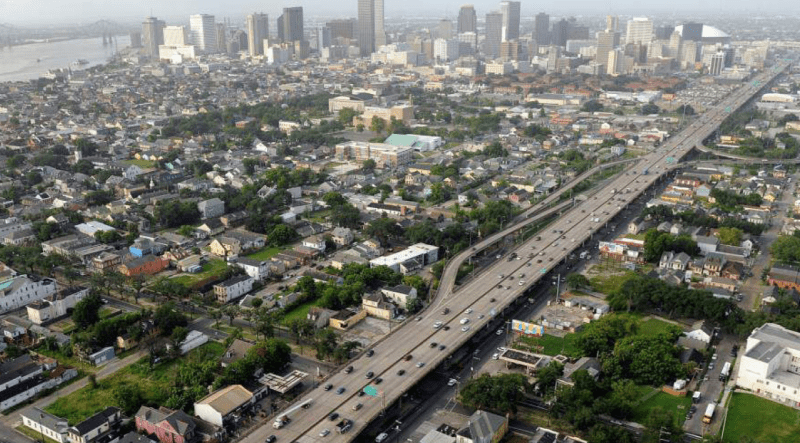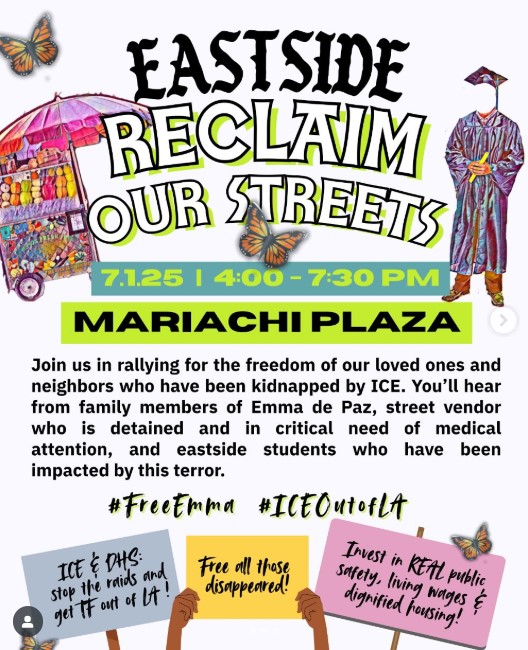North Claiborne Avenue was once the heart of the Tremé neighborhood in New Orleans. A vibrant commercial corridor with a wide, shady median, it was a key shopping and gathering place for the neighborhood in the early part of the last century.
But all that changed in the 1960s, when the whole street was torn up and replaced with an elevated highway: the Claiborne Expressway. Today it remains, aging, but lording over the neighborhood and others, contributing to high air pollution and contributing to a food desert by eliminating a broad avenue once flanked by shopping.
But now there's hope. A group of residents and business owners is pushing for the highway to be torn down and converted to a street-level boulevard and affordable housing.
The highway was picked this week as number one on a list of 10 "freeways without futures" created by the Congress for New Urbanism. Here's a rendering drawing of how the area in the top photo could look post-teardown:
Tearing down highways — specially elevated ones like the Claiborne Expressway — is something of a trend in the U.S. According to the Congress of New Urbanism, 17 cities, including Rochester, Milwaukee and San Francisco, have either committed to, or torn down, freeways since the 1980s.
In its 2019 report, the group cites 10 highways, including the Claiborne, that are ripe for removal. They include:
- I-275, Tampa, Florida
- I-35, Austin, Texas
- I-345, Dallas, Texas
- I-5, Portland, Oregon
- I-64, Louisville, Kentucky
- I-70, Denver, Colorado
- I-81, Syracuse, New York
- I-980, Oakland, California
- Kensington and Scajaquada Expressways, Buffalo, New York
Tearing them down opens up valuable urban land, saves money and promotes alternatives to long highway commutes, like walking and transit.
"Replacing these facilities, many at the end of their useful lives, is often neither feasible nor an efficient use of public funds," said the group in a press release.
Rochester provides a solid example: The city took a former trench called the Inner Loop Highway and partly filled it in as part of a conversion to a surface road and development sites (which are under development, see below).
Another highway singled out for elimination this year is Tampa's Interstate 275. When this 11-mile highway was constructed in the mid-1960s it "split the city in half," according to the group. Central Park — "the Harlem of the South" — and Ybor City, rich historically black and cuban neighborhoods, were badly undermined by its construction.
Rebuilding the aging the highway would cost $3-$9 billion by some estimates. Instead, a group of locals led by designer Josh Frank has proposed an alternative: #blvdtampa — an at-grade boulevard that would rebuild the street grid and make way for light rail or bus rapid transit.
Florida DOT recently agreed to consider the boulevard plan as an alternative. Not only would it be much less expensive than a highway rebuild, it would create 35 acres of developable land in Tampa's urban core. Frank imagines it being served by either light rail or bus rapid transit. A number of prominent politicians support the proposal, according to CNU.







